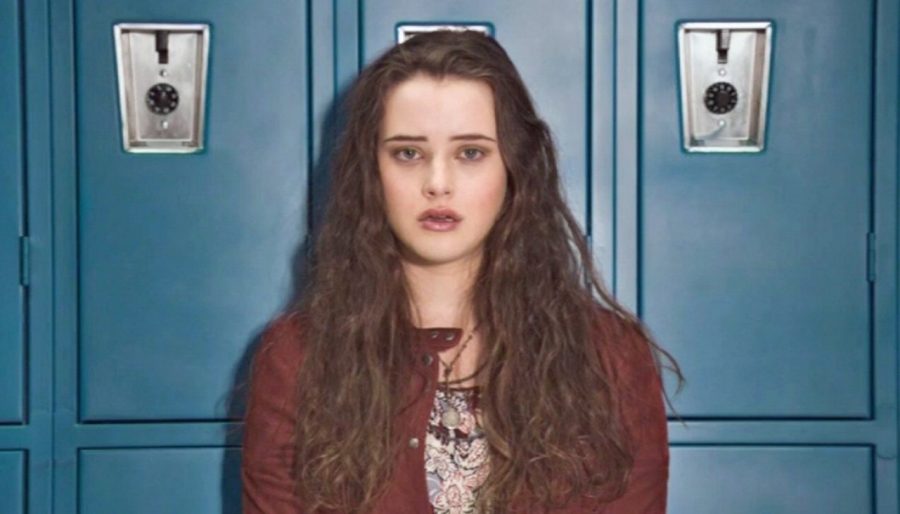Depicting mental illness and suicide in the art world
The new Netflix series “13 Reasons Why” portrays both benefits and consequences of covering difficult topics across different mediums
More stories from Nicole Bellford
Photo by Submitted
“13 Reasons Why,” a brand new Netflix series based on Jay Asher’s hit novel has received mixed reviews since its release in late March.
In the recently released Netflix mini-series co-produced by Selena Gomez and based on Jay Asher’s 2007 hit novel “13 Reasons Why,” protagonist Hannah Baker releases a set of 13 tapes to a handful of her peers, each tape dedicated to a specific person and labeled as a reason why she tragically committed suicide.
The series, predominately portrayed in the perspective of Baker’s short-lived love interest, Clay Jensen, follows the lives of those left behind after her untimely death, from her enemies on the tapes to her heartbroken parents. Since its release in late March, the series has maintained a five star rating on Netflix, but received mixed reviews across social media.
With the occurrence of viewer discretion instances such as graphic depictions of sexual assault and Baker’s gruesome suicide, the debate across social media realms has presented itself: Is it acceptable to make art out of something as tragic as mental illness or suicide?
After carefully looking at both sides of the debate, I have come to a conclusion as mixed as the mini-series’ reviews; It all depends on how you look at it.
On one hand, my answer, among others, is a hard “no.” In an editorial piece written by Rachel Sloan on TheMighty, Sloan voiced an opinion that many bloggers have recently shared.
“As a woman that has long battled depression and suicidal ideation, the show’s well intentioned message about mental illness, bullying and sexism was not shocking but rather affirming of the dangerous ideals that have often left me feeling hopeless and alone,” Sloan wrote. “When I finished the show, I found myself drowning once again in toxic, dangerous thoughts.”
Sloan brings up the unfortunate reality that when art forms such as film and literature try to depict suicide with intentions of bringing awareness, there is an inherent risk those with mental illness will be triggered by such depictions of pain they have personally experienced.
In addition, depictions of suicide and mental illness in artworks often end up romanticizing topics that should never, under any circumstance, be viewed in such a way.
Lately, any time I scroll across my Twitter feed, I see tweets from mainstream millennial accounts discussing “13 Reasons Why.” Instead of bringing up important aspects of mental illness awareness, however, these tweets focus on how “beautiful” Baker was or how Jensen’s profession of his love for Baker could have potentially saved her life.
Seeing those tweets and hearing people speak about the series in this way makes me extremely upset. Suicide, self harm, mental illness and sexual assault are not beautiful. They never has been, and they never will be. Loving the girl who can’t love herself is not some “Hollywood romantic” instant. It is difficult. It is painful. It is full of devastation and heartbreak.
Coming from someone who has personally dealt with mental illness and self-harm throughout her young adult life, romanticizing pain that has placed undeniable suffering in my life is a slap in the face. Looking at the hurt on my loved ones’ faces when they see my scars is something I wish I could erase from my mind permanently.
Watching Baker (spoiler alert) slit her wrists open in her suicide scene was gut-wrenching and difficult for me to watch, bringing back such painful memories I couldn’t finish the episode without breaking down in tears and consequently throwing up — sick to my stomach from viewing the events portrayed.
However, as the mini-series has emphasized, there are multiple sides to every story. Looking at the opposing position of the debate, I can understand why depicting mental illness and suicide in art forms is acceptable and ultimately valuable.
Although mental illness is an extremely prevalent problem in modern society, CNN said, in a recent survey, 90 percent of participants have reported facing stigma and discrimination due to their mental health problems. Over half of that population said the stigma and discrimination are as bad or worse than the illness itself.
Mental health issues are clearly a taboo topic in society that end up placing those affected in discriminatory instances rather than those of support and understanding. Depicting issues that are difficult for others to talk about and properly comprehend in mainstream art forms allow a taboo topic to gain rightful attention, and hopefully awareness.
CNN goes on to report 450 million people worldwide deal with mental illness. This is not a number that can be ignored or discriminated against any longer.
While there will always be the inherent risk of triggering painful memories or thoughts when mental illness and suicide are depicted in the realm of art, proper execution can raise awareness and understanding, as well as inform those with mental illness of an important message: They are not alone.
In essence, depicting difficult issues such as mental illness and suicide in the art world provides both benefits and consequences. It all depends on how you look at it.


